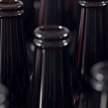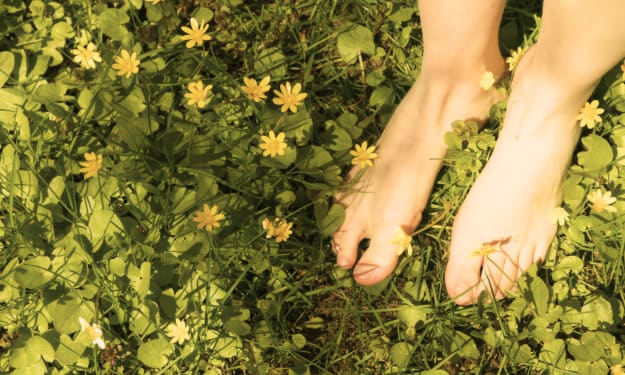
An argument and primer to isolating your own yeast for brewing beer
Yeast. Every article you read about beer brewing will tell you that this little microbe is a critical ingredient. Yeast is there to produce alcohol and a wide range of flavourful secondary metabolites that give your brew such a pleasant profile.
Yeast is one of the most defining additions to your brew. This little Eukaryote will make your beer shine. The diversity of beer yeasts that breweries across the globe use in their beer-making are a testament to the versatility of this tiny organism. With diversity comes a hard truth:
Homebrewers have access to a relatively small set of yeast strains.
A thesis on specific reasons is not helpful here. Some brewers keep their strains close to their chests and stick with what they have. The good news, however, is that with a little grit and determination, you can vastly increase the range of yeasts available to you. Isolate your yeast! After you have read the article below, you will itch to capture what nature offers in great abundance. Wild yeast!
1. It is easy. Very easy. Just think of all the effort you spend trying to keep nasty bugs out of your brew. Now consider applying the reverse. Yeast trapping in its essence is capturing new strains from the environment. You casting a wide net out to the natural world to capture a highly diverse community of microbes. From these bugs, you then select and isolate the strains that make you a fantastic beer.
You may think: “I do not have the know-how to isolate my yeast strains”.
I would argue that if you have brewed two decent beers (without contamination), you have quite the skills set already. Lots of the practices and principles you adopt in brewing apply to yeast hunting. In some ways, you are extending your microbiology skills to a new and exciting area of beer science. Yeast biology.
2. Your beer is unique and will have a backstory. You share your latest creation with family, friends, or fellow brewers. Imagine the fun and excitement or awe you will inspire when you recount the story that led to the isolation of the yeast and construction of the beer they are sampling?
3. You unchain yourself from a select number of suppliers and appreciate the rich bounties our environment has on offer. Sure, we all have to be mindful of the nasty bugs out there, threatening to spoil your beer and in a worst-case scenario, your health. But our environment also has goodies on offer. Unknown yeast strains that can turn your wort into one of the best beers out there.
All that you need, besides your skills, a patch of green, and your reagents, is common sense.
4. It is satisfying, exciting, and loads fun! Seeing your own special yeast strain in action is very satisfying. You know your strain and remember the travails that got to where you are now. Brewing your special beer with your local yeast strain. Can you think of anything more fun, besides drinking a nice cold one?
Beer Trapping in a nutshell:
You can catch wild yeast nearly every day of the year. The spring, summer, and fall seasons, however.
Set the trap
All you need is a sterile substrate (you make wort all the time when you brew), patience, and some inspiration. Can you think of locations or habitats where yeast could flourish? I will provide you with a list below. There are several sampling strategies that you can use. You can try to trap yeast from the environment by leaving a jar with wort (aerated, preferably boiled with hops and with a lower OG value) out in the open (somewhere nice and quiet) for two to four hours. Remove any insects that make their way there, close the vessel and let it sit (use an airlock). Alternatively, you can try to isolate yeast from flowers or fruits. With this strategy, you take the object of interest and throw it in a small vessel with some wort (Low OG, prepared with hops). You then leave your vessels to incubate for a few days.
Select your Yeast strains
I - Your eyes and nose will take you a long way in the selection process. The point of beer trapping is to find yeast that can ferment your wort and make alcohol. The production of CO2 (bubbles) is the telltale sign of that. You can take vessels that show fermentation forward for testing.
II - From the vessels that have yeast, smell the contents of each vessel after fermentation has stopped. If the smell is bad or mouldy, throw it away. Keep the proto-beer yeasts that smell nice or do not put you off. If you can smell alcohol, great.!
III - After fermentation has stopped, and you have selected vessels that appear to have an acceptable proto-beer, you can take a small sample for you to taste. Select the beers that are clear (you can cool the wort to help the yeast settled to the bottom) and do not carry any other bugs.
IV- If you think you have a vessel that contains your super-duper wild yeast strain, you can try to isolate it. You require some basic microbiology techniques and materials for this, and I will write about this in a future article. It is easy; I promise! I will also be available for advice through my Slack Channel (Available to paying subscribers) to make your yeast hunt a raving success!.
If you have enjoyed this article and would like to learn more about beer, brewing and yeast trapping, please visit my substack page and sign up to my newsletter for free!
The Beer Collection is dedicated bring fun and informative articles for you. Work for The Beer Collection is funded by you, the reader. Please consider leaving a tip. Many thanks and Cheers!
About the Creator
Brewingbrowser
Science powers delicious beer making. To subscribe to our free newsletter, please join here: https://brewingbrowser.com
Enjoyed the story? Support the Creator.
Subscribe for free to receive all their stories in your feed. You could also pledge your support or give them a one-off tip, letting them know you appreciate their work.






Comments
There are no comments for this story
Be the first to respond and start the conversation.